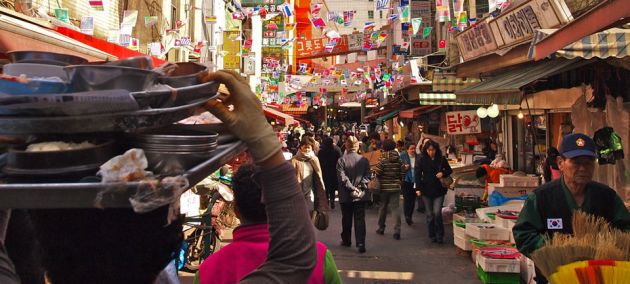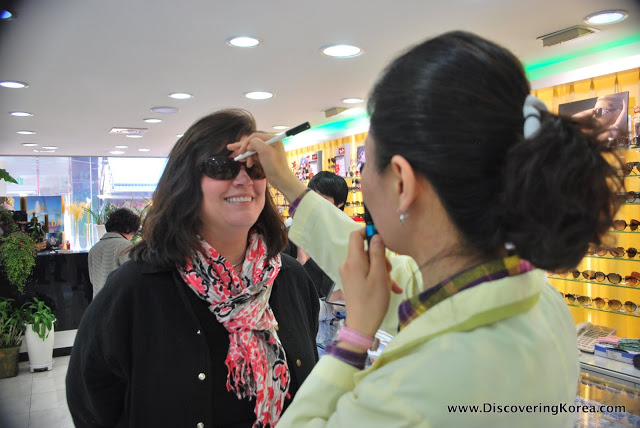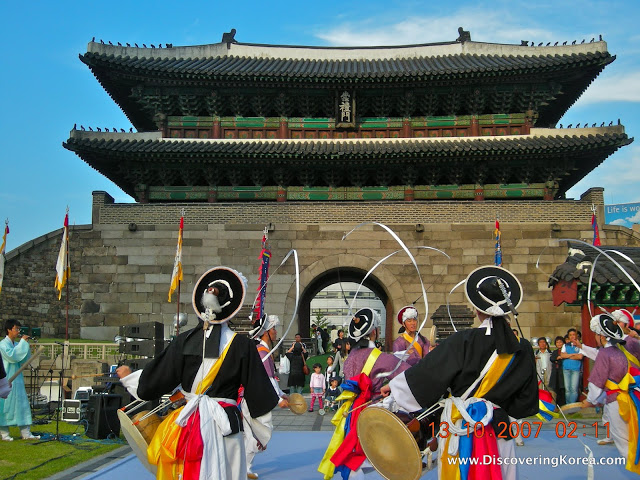The Namdaemun Traditional Market in Seoul is located in the center of the modern Korean capital. However, it is named for the ancient city’s “Great Southern Gate,” Sungnyemun (숭녜문), whose informal name is Namdaemun.

In the old days, the four grand gates acted as the primary passages for inbound and outbound traffic. In 1414, just a few years after Seoul’s founding, a market was established near the southern gate.
Six hundred years in the making, Namdaemun Traditional Market in Seoul is perhaps Korea’s oldest continuously operated public markets, a vibrant place that fully expresses Korea’s boisterous “jangteo” market culture.
Namdaemun Traditional Market in Seoul is among Seoul’s most popular tourist attractions.
Despite relatively recent shopping hotspots like Dongdaemun Fashion Town (동대문시장) or the popular Myeong-dong (명동) and Insa-dong (인사동) neighborhoods, Namdaemun is the place to go for great deals on meat and produce, ginseng, kitchenware, textiles and blankets, holiday decorations… really for just about anything.

One of the activities I suggest for visiting friends and families is to visit one of the eyeglass shops that populate Namdaemun Traditional Market in Seoul.
Be it for luxury designer frames or glasses made by an inexpensive, but high-quality brand, Namdaemun is a fantastic place to get prescription daily eyeglasses or a chic pair of sunglasses at a reasonable price. Plus, expect to have them ready for pick up (or delivery) in just a couple of days!
If you’re hungry, there’s no need to leave the market. As you’d probably expect, Namdaemun Traditional Market in Seoul is one of Seoul’s best spots for delicious no-frills Korean food.
Walking along the main thoroughfare, why not stop by the line of carts selling one of the signature treats—pigs’ feet? Or, maybe a hot bowl of hand-made noodles is more to your liking?

One of my favorite places is Namhae Sikdang (남해식당). Located inside a covered alley near Gate 6, it’s one of a dozen small stalls where you simply pull up a stool.
Operated by three lovely sisters, the simple soup of thick noodles, chopped onions and pieces of dried seaweed is flavored with hot pepper paste and spongy slices of fish cake.
Although Namdaemun Traditional Market in Seoul opens bright and early – many shops get started at 5:00 am – the day really gets started the previous evening, when retailers from around the country crowd the market into the wee hours and delivery motorbikes and hand-drawn carts pick up and drop off all manner of merchandise.
But for the consumer, Namdaemun is also a great option for the early riser, since most parks, museums and other popular attractions will still be shuttered hours after the market is bustling with commerce.
And finally, although Namdaemun Traditional Market in Seoul was destroyed during the Korean War and plagued by several fires in the modern era, it’s nevertheless persevered and is currently undergoing renovations sponsored by the city of Seoul.
Should you visit, while the market’s open-air areas are the most popular, try stepping inside to see the remarkable array of some 10,000 individual stores!
Better yet, prepare to combine your market tour with a visit to the historic grand gate, Sungnyemun, whose reconstruction is scheduled for completion in 2013.
For Your Information…
| Open: | Open 24 Hours, but individual shop hours vary. Some are closed on Sunday. |
| Admission Price: | Goods are typically much cheaper than you’ll find in grocery or department stores. Sadly or gladly, as of 2012, price haggling is no longer allowed. |
| Address: | Seoul Jung-gu Namchang-dong 49-1 |
| Directions: | Hoehyeon Station (#425) on Line 4, Exit 6 |
| Phone: | 02-753-2805 |
| Website: | Official Site |
About Matt Kelley
Matt Kelly is native of the US Pacific Northwest and is half-Korean by ethnicity. He lived in Korea for five years and has written hundreds of travel guides for Wallpaper, TimeOut, the Boston Globe and Seoul Magazine and was a host for several different variety shows on Korean radio and television.
